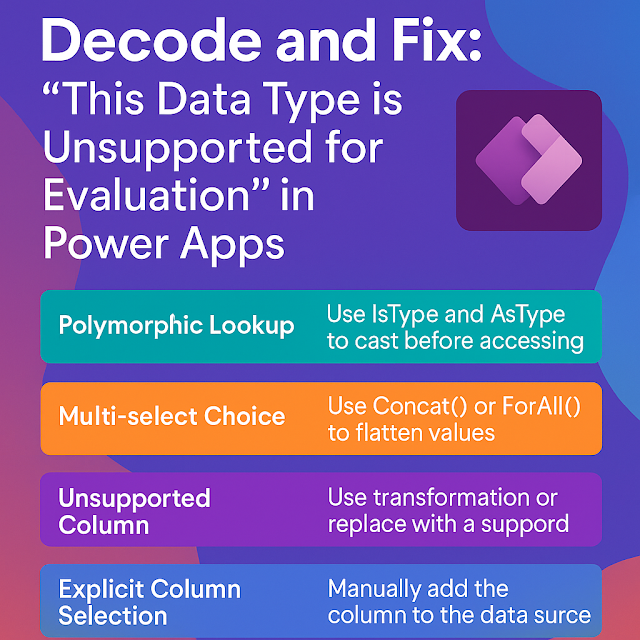Microsoft Dynamics 365 Customer Experience Analyst : Configure relationship behaviors
In Microsoft Dataverse, relationship behaviors define how records in related tables interact with each other, especially during actions like create, update, assign, share, or delete. They control the cascading effect of operations—for example, whether changes to a parent record automatically apply to related child records. Common relationship behaviors include Parental , Referential , Referential, Restrict Delete , and Custom . For instance, in a Parental relationship, if a parent record is deleted, all related child records are also deleted. In contrast, Referential behavior only maintains the link but does not cascade actions, ensuring child records remain intact. By configuring these behaviors, administrators can enforce business rules, maintain data integrity, and streamline record management across tables in Dataverse.
- Parental → Child records fully depend on the parent (create, assign, share, delete cascade).
- Referential → Maintains links but does not cascade actions (child records remain unaffected).
- Referential, Restrict Delete → Prevents deletion of a parent if child records exist.
- Custom → Gives fine-grained control over which actions (Assign, Share, Delete, Reparent, Merge) should cascade.
- Developers need to know which operations will automatically apply to related records (e.g., deleting an account may delete all contacts if set to Parental).
- Architects should align these behaviors with business rules to prevent data loss or orphaned records.
- Cascading operations can trigger bulk updates or deletions , affecting performance on large datasets.
- Architects must balance automation (cascade) with scalability.
- Relationship behaviors also affect record ownership and sharing . For example, when a parent record is reassigned, related child records may also transfer ownership depending on the cascade rule.
- Developers should handle these carefully to avoid unintended access changes.
- Developers may need to implement plugins or Power Automate flows for scenarios not supported by out-of-the-box behaviors.
- Architects should decide when to use built-in cascade behaviors vs. custom automation for flexibility and maintainability.
- Must anticipate cascade actions in plugins, workflows, or Power Automate flows (to avoid duplicate execution).
- Needs to handle error cases (e.g., restrict delete stopping a transaction).
- Should optimize queries and testing for performance when cascade touches many related records.
- Relationship behaviors directly influence data model strategy (hierarchy vs. loose association).
- Cascading impacts governance, compliance, and auditing (who owns, who can access, who can delete).
- Must balance automation vs. scalability — e.g., cascade delete on a large table can impact system performance.
- Plays a key role in future-proofing the design (avoiding unintended consequences as data grows).
Developers deal with the “mechanics” (how behaviors trigger, what happens in code, handling side effects).Architects deal with the “implications” (how behaviors enforce business rules, ensure integrity, and scale in the long run).
Recommendations for Developers
- Understand Cascade Rules Clearly
- Test how Assign, Share, Delete, and Reparent cascade across related records.
- Avoid surprises like unintended mass deletions or ownership changes.
- Handle Orphans and Errors
- Implement checks or cleanup logic for orphaned records in Referential relationships.
- Provide user-friendly error handling when Restrict Delete blocks an operation.
- Optimize for Performance
- Be mindful of cascades that touch many child records, as this can slow down queries or updates.
- Use batch operations or plugins where needed.
- Validate in Plugins & Flows
- Avoid duplicate triggers when cascade operations fire events across related tables.
- Write unit tests to confirm expected outcomes.
Recommendations for Architects
- Align with Business Rules
- Choose behaviors that reflect real-world dependencies (e.g., Parental for strict hierarchies, Referential for loose links).
- Avoid cascade delete on critical tables unless the business truly requires it.
- Balance Automation vs. Control
- Use Custom behaviors when fine-grained control is necessary.
- Where possible, rely on standard behaviors instead of complex automation to reduce maintenance overhead.
- Plan for Data Integrity
- Apply Restrict Delete to prevent accidental loss of child data.
- Define governance around how orphan records are handled.
- Think Long-Term & at Scale
- Consider system growth—what works with thousands of records may become a bottleneck with millions.
- Document decisions clearly so future teams understand the rationale.




















Comments
Post a Comment